I explore the English countryside through the eyes of 7 incredible digital artists – here's what I discovered
How Cotswold Mist reimagines England through the lens of fantasy and folklore.
The best digital artists from around the world have combined their talents to create one of my favourite art book projects of 2025, Cotswold Mist. Using a mix of digital art software and the best 3D modelling software, these artists, inspired by the author's words, have created a uniquely fantastical vision of England. If you liked the cinematography of 28 Years Later, you're going to love this book.
Fascinated by the rich folklore associated with the English countryside in which they live, digital cinematographer Inga Teder and visual effects supervisor He Sun partnered to produce Cotswold Mist; the fantasy mystery novel features 28 digital illustrations by 16 artists depicting picturesque towns, villages, landmarks and mythical entities that are encountered as a psychiatrist attempts to uncover the truth behind a boy’s disappearance and its connection with local legends.
“Though the initial idea was to create a story centered around Cotswolds towns and landmarks, and reimagining local folklore and history, as the plot evolved and the characters grew more complex, I began to revisit my original ideas and enrich them with imagination,” states Inga Teder, author of Cotswold Mist.
Inga says In the end, it worked both ways, telling me: "I knew that for the final epic battle between two beasts, I needed a location with plenty of water, and my choice was either Gloucester Docks or the city of Bath, both on the edge of the Cotswolds. And, like Carroll with Tenniel in Alice in Wonderland, I had a few moments where an artist’s creative twist – changing herons to flamingos – was so wonderfully perfect that I let go of my original idea and embraced their imaginative additions completely.”
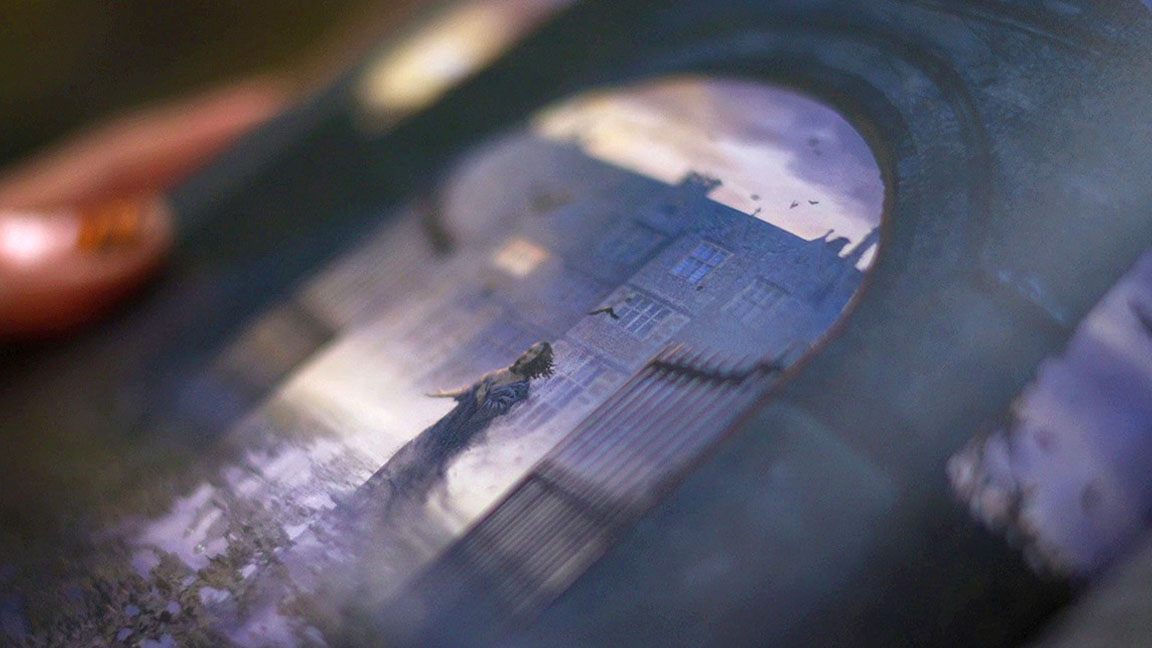
Most of the illustrations began with location scouting and were reenvisioned with supernatural atmosphere and creatures from the narrative. Each one was treated as a keyframe concept from a film because the goal was to make them visually striking, cinematic, and suspenseful.
“By placing the illustration at the end of each chapter, we wanted to give readers the space to form their own mental image first, based on mood, emotion, and personal interpretation,” explains Inga. “Then, when they reach the illustration, it becomes a kind of reveal. This hopefully adds an extra layer of engagement and makes the illustrations feel more like a reflective part of the storytelling rather than just descriptive.”
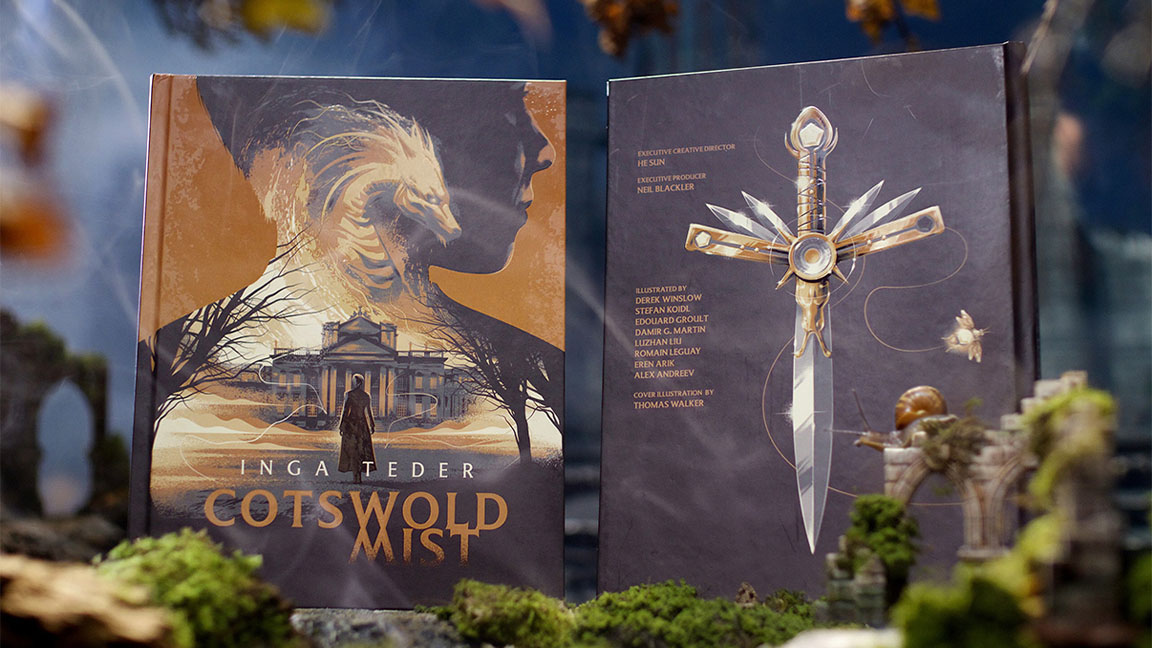
The talent net was cast globally, ranging from Beijing, China to Saint-Petersburg, Russia to Rijeka, Croatia.
Daily design news, reviews, how-tos and more, as picked by the editors.
“Some of the artists were people I worked with before in the film and games industry, while others were new talents we discovered online,” remarks He Sun, Creative Director, Cotswold Mist. “Depending on the subject of each chapter, I’d browse portfolios on ArtStation or Instagram, looking for styles that matched the tone of the scene. Then I’d reach out to see who was the right fit and available. It was all about finding the best match to bring each part of the story to life.”
He Sun adds, “In the end, this project is a true labour of love, built on real stories and genuine artistry. We kept going because we believe in creating an IP that can stand the test of time, and I hope readers will feel that passion on every page.”
To showcase the genuine artistry of Cotswold Mist, which did not rely on generative AI, the following is the creative journey for seven of the illustrations.
Stow On The Wold Kelpie by Eren Arik

“When it comes to the original idea of Kelpie, she is a shapeshifting water demon that originates from the underworld,” explains He Sun. “In the story, the creature travels through a portal from the underworld to the human world; she undergoes a transformation across several stages of maturity.
"What you're seeing in the illustration is an early stage of that transformation, as she is not yet fully formed. Kelpie isn’t a creature born of evil; rather, she was once a pure spirit, wounded and tormented by suffering.
"That pain reshaped her, gradually turning her into a demon. This duality is what we aimed to incorporate into her design: a sense of elegance intertwined with subtle, demonic features.”
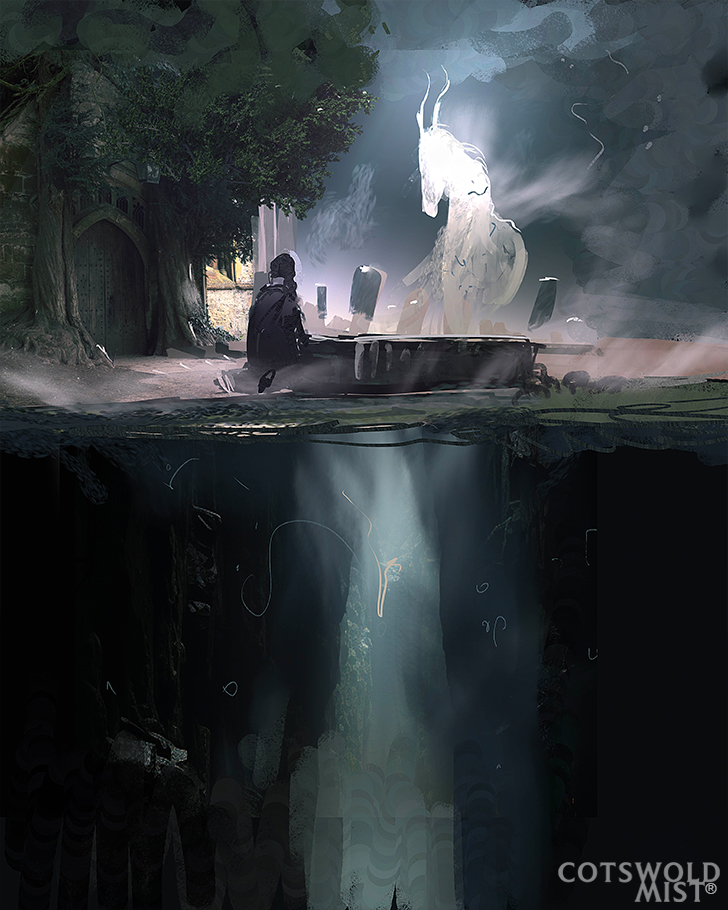

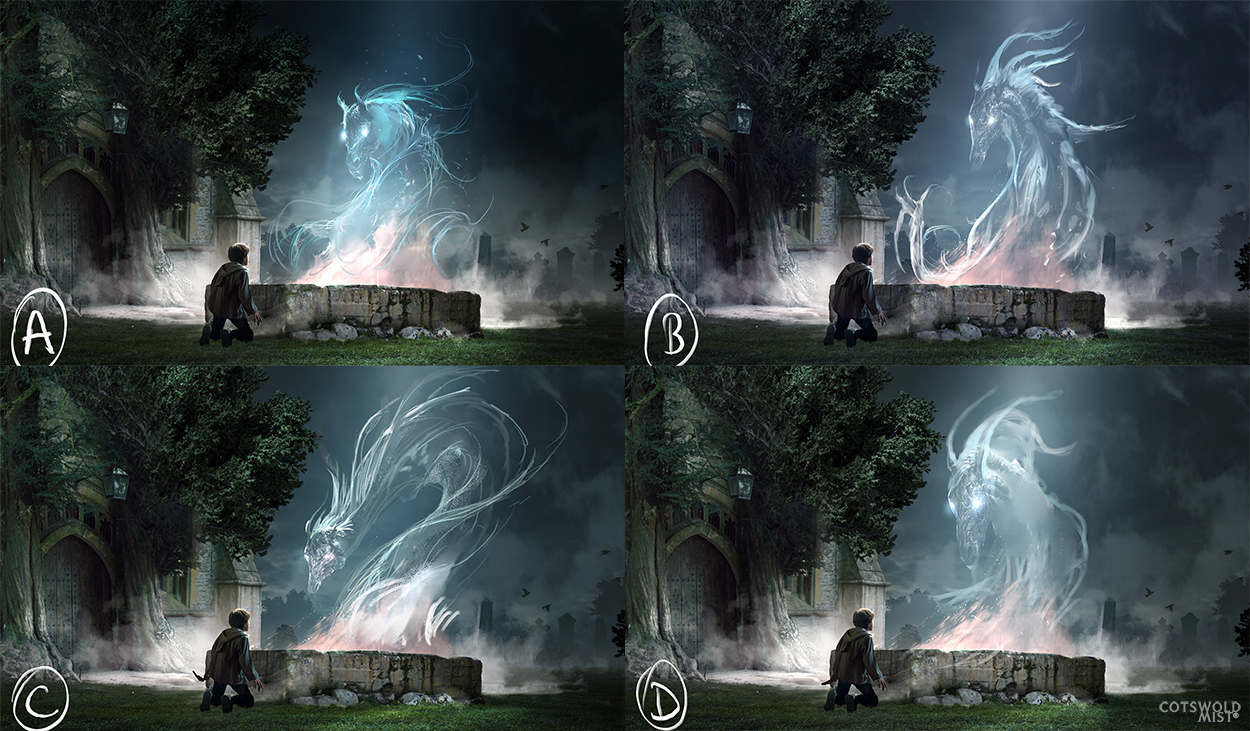
Chastleton House & Ghost by Stefan Koidl
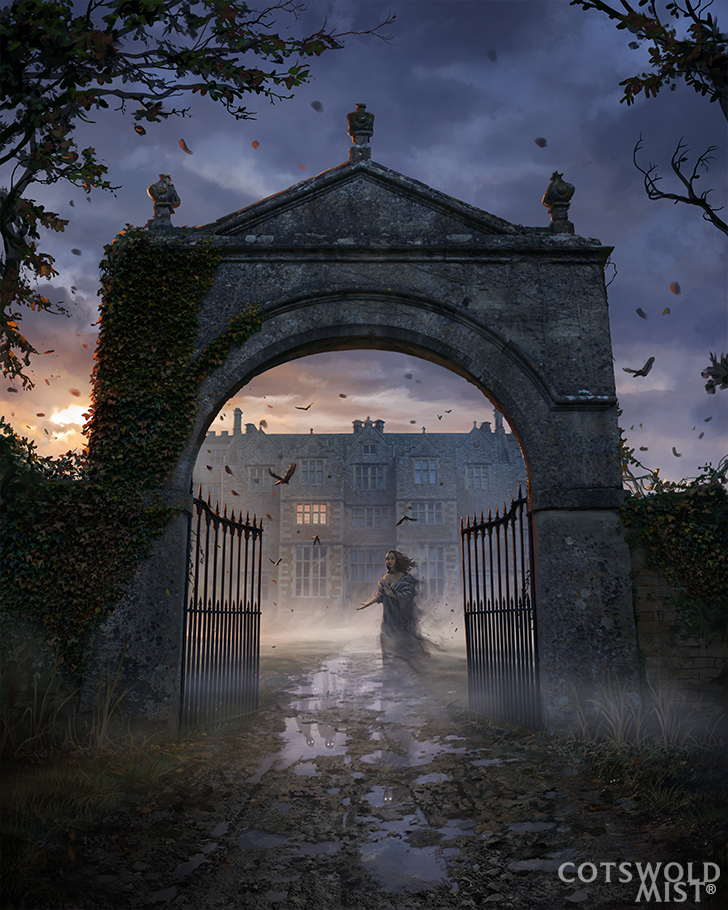
“Every commission is different, especially when it comes to drawing since there is just so much imagination out there,” notes artist Stefan Koidl. “In terms of other illustrations, the main difference was that this project used real characters and locations, which I think is kinda cool!”
Assisted with a Wacom Intuos Drawing Tablet and Adobe Photoshop, the general order of creation consists of: a colour sketch, adding a point of interest or story, refining the painting, doing a final detail pass, and concluding with finishing touches.
Stefan explains: “In terms of Cotswold Mist, I had to adjust this a bit since I already received some clear visuals I wanted to implement! I got a lot of photos of the real location, it was really impressive that they even had some 3D scans for me, which gave me a clear picture of what it looks like on site. I never got 3D scans before, which was really amazing to have!”
The approach to Chastleton House is quietly dramatic. “A massive stone entrance gate, weathered by centuries of wind and rain, stands like a sentinel at the edge of a forgotten age. It doesn’t scream for attention; instead, it looms with quiet authority, hinting at the layered history behind it. Part of the magic of Chastleton is that it doesn’t try too hard to impress. It allows you to discover its character slowly. That’s why I didn’t have any key attributes I wanted to retain.”
The Ghost had to have a real presence. “The mystical elements are added subtly: a faint glow in the eyes, a trace of fog, partial transparency, or moments where their form gently dissolves. It’s the contrast between the ordinary and the extraordinary that makes the magic feel believable,” says Stefan.

Integration is achieved by matching colours and balancing contrast. “Even the most beautifully designed figure can feel disconnected if the tones clash with the environment," shares Stefan. "The character and the world need to speak the same visual language, sharing shadows, lighting direction, and saturation. This subtle harmony ensures they feel truly part of the scene, not pasted onto it.”
“To avoid losing control of the scene, it's important to ensure that every character and structure remains a clear, intentional part of the composition,” notes Stefan. “Each element should serve the story and reflect the tone or theme of the piece. This approach helps maintain clarity, coherence, and purpose throughout the entire visual narrative.”
A wide range of research is crucial when doing world-building and character design. Stefan explains, “The more diverse references and influences you gather, the richer and more nuanced your creations will become. This process not only fuels creativity but also helps you develop unique elements that feel authentic and grounded within the world you’re building. You can compare it to making tomato soup; everyone knows what it tastes like, but you can only make it if you have a recipe.”
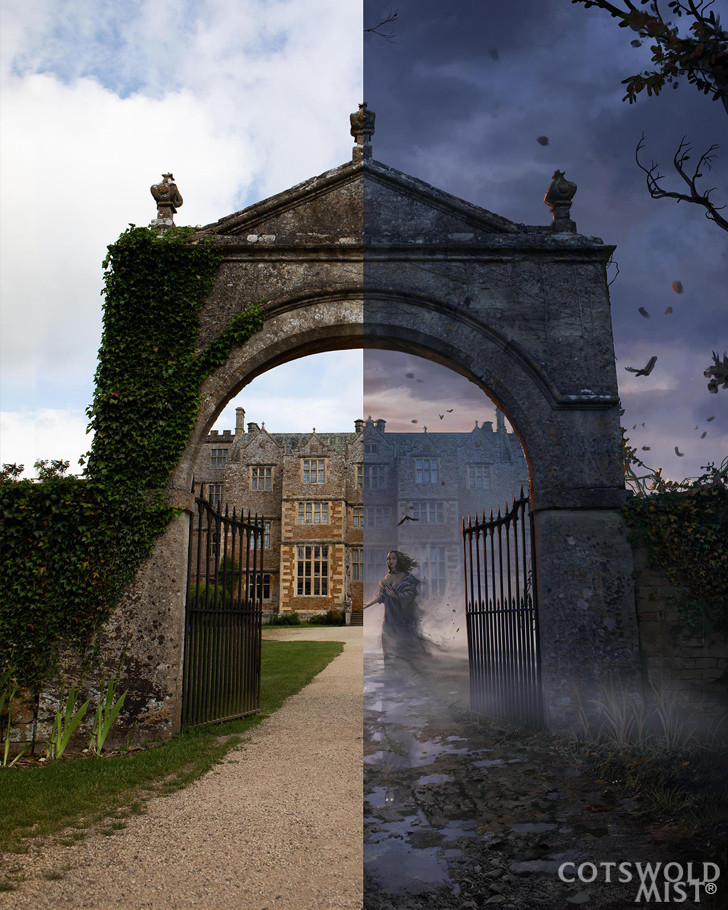
Blenheim Palace Court Yard & Porch by Luzhan Liu
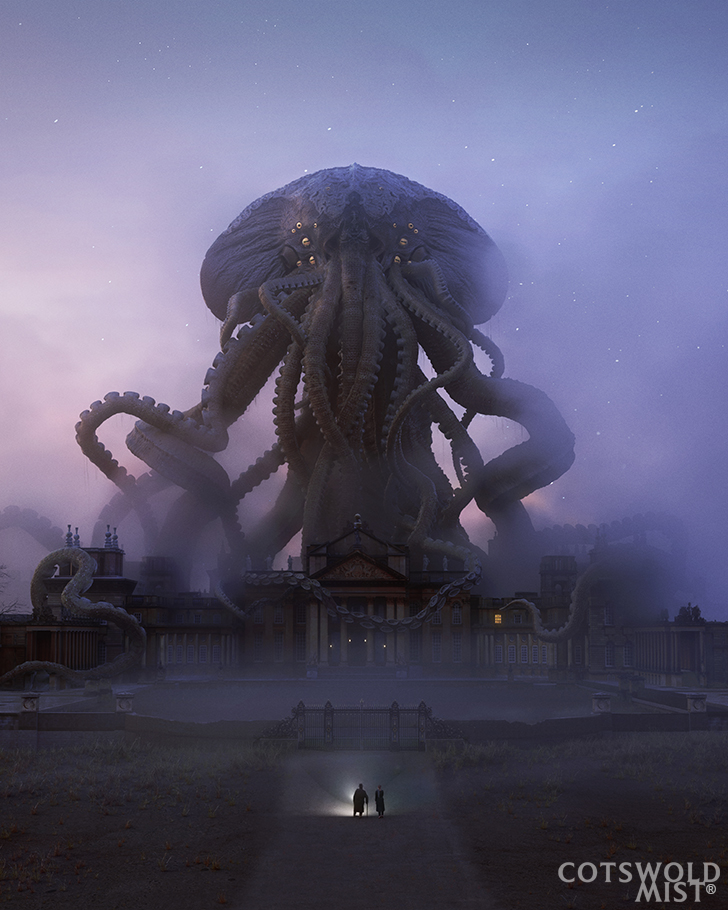
“Most of my previous work involved concept design for films and video games, so Cotswold Mist was a refreshing departure from my usual projects,” states Luzhan Liu. “My usual workflow starts with a monochrome sketch that nails down composition and lighting. After the concept is approved, I create the 3D assets, render the scene, and finish with refinements in Photoshop.
For Cotswold Mist, the main shift in approach for Luzhan was incorporating photorealistic photogrammetry scans into the workflow, saying: "[This allowed] me to preserve authenticity while staying true to my established creative process.”
The main inspiration came from the text of the novel. “For the chapter I worked on, the writing conveyed a dark, oppressive atmosphere, with mysterious creatures emerging from the fog, evoking a strong sense of Lovecraftian horror," shares Luzhan, adding: "These vivid descriptions offered clear visual cues: thick mist concealing unnatural forms, a muted color palette, and an overarching sense of dread. With such a strong textual foundation, I was able to craft imagery that remained faithful to the story’s unsettling tone.”
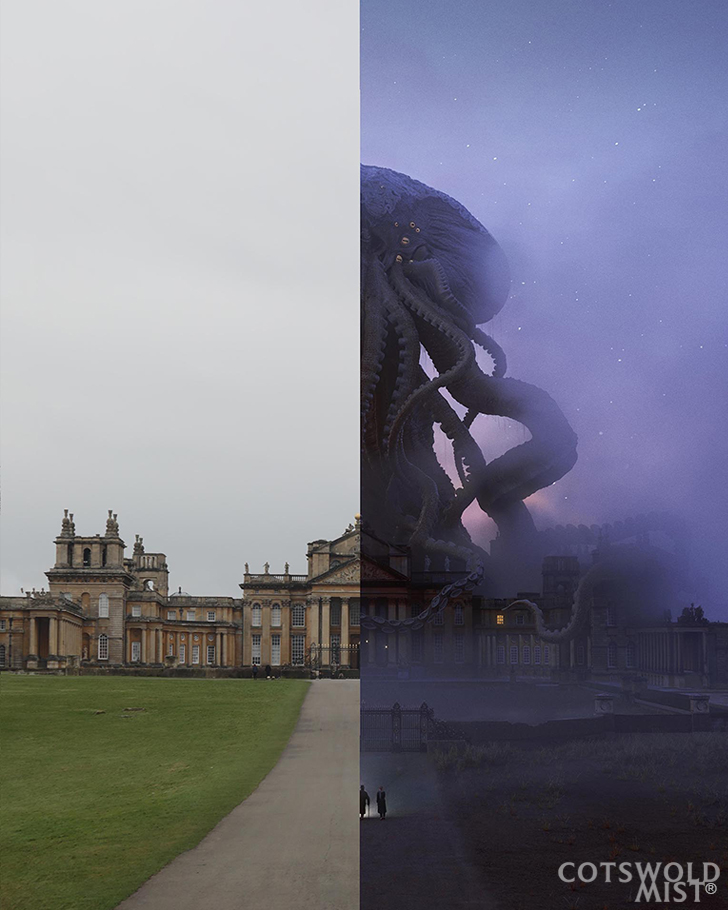

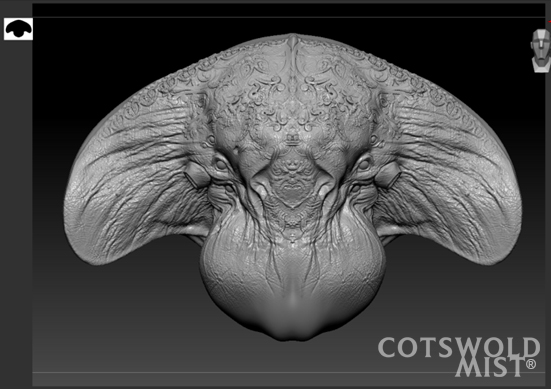
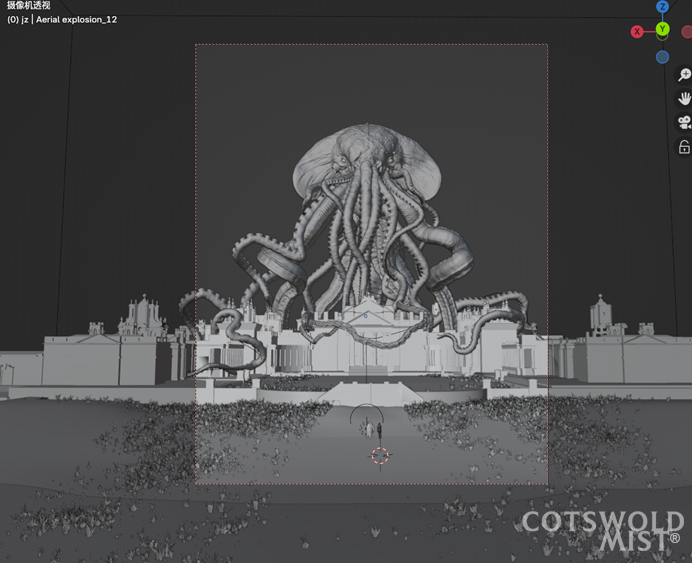
“The primary challenge was designing a colossal creature that functioned as the architectural guardian of the space,” remarks Luzhan. “This required extensive visual research into how to blend organic and constructed elements. I explored ways to incorporate architectural details like carved stone patterns and masonry textures into the creature's physiology. While these specific features ultimately became more subtle in the final composition, that foundational research was crucial for establishing the guardian's imposing presence and thematic connection to its environment.”
The reliefs on the buildings and carved details on the pillars are unique to Blenheim Palace. Luzhan explains: “I also wanted to preserve the visible traces of history: the weathering, the signs of age, and the slightly dilapidated feel that gives the architecture its character. As for the surrounding landscape, maintaining its natural and untouched state was essential. I believe that preserving the original appearance is the greatest form of respect one can show to any historical site.”

Often in creature design, the focus is on striking the right balance between fantasy and realism. “If a creature’s form leans too far into the fantastical or becomes overly stylised, it can feel artificial no matter how realistically it’s rendered,” observes Luzhan.
“I often aim to preserve a sense of rawness or primal characteristics to keep the creature grounded and believable. From there, rendering realistic materials and placing the creature in a lifelike environment are key to reinforcing its credibility within the scene.
"Personally, I prefer creature designs that stay grounded in realism. The goal is for the viewer to immediately sense the creature’s characteristics, behaviour, and natural habitat. Avoid overly exaggerated features, as they can easily make the creature feel artificial and less believable.
"The same principle applies to world-building. Start with the subtle details of reality, elements that feel familiar and convincing. Once the foundation feels authentic, you can introduce creative changes and imaginative elements in a way that still feels coherent and immersive.”
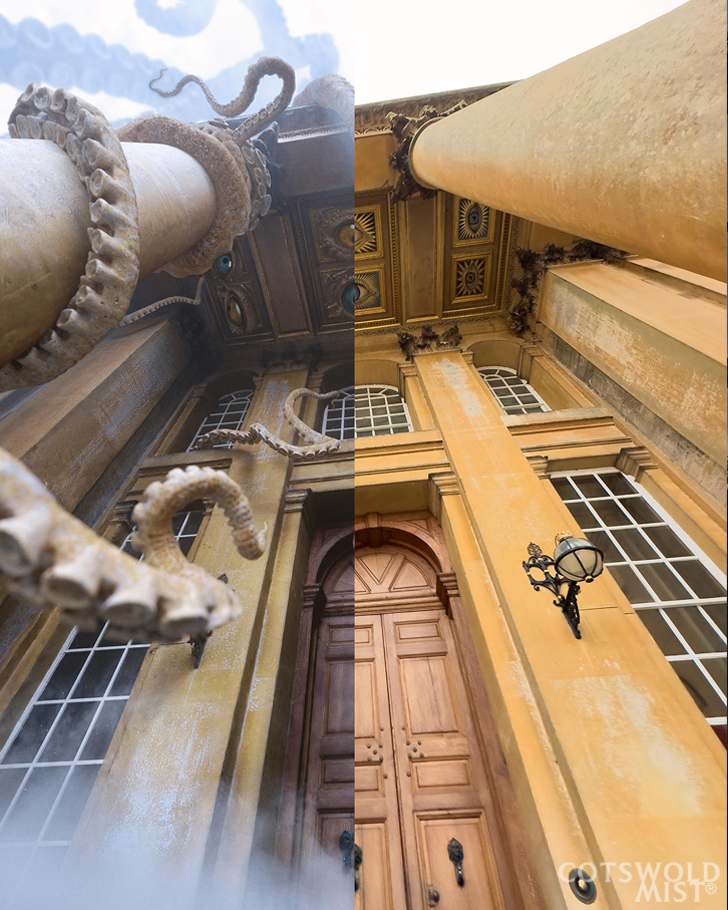
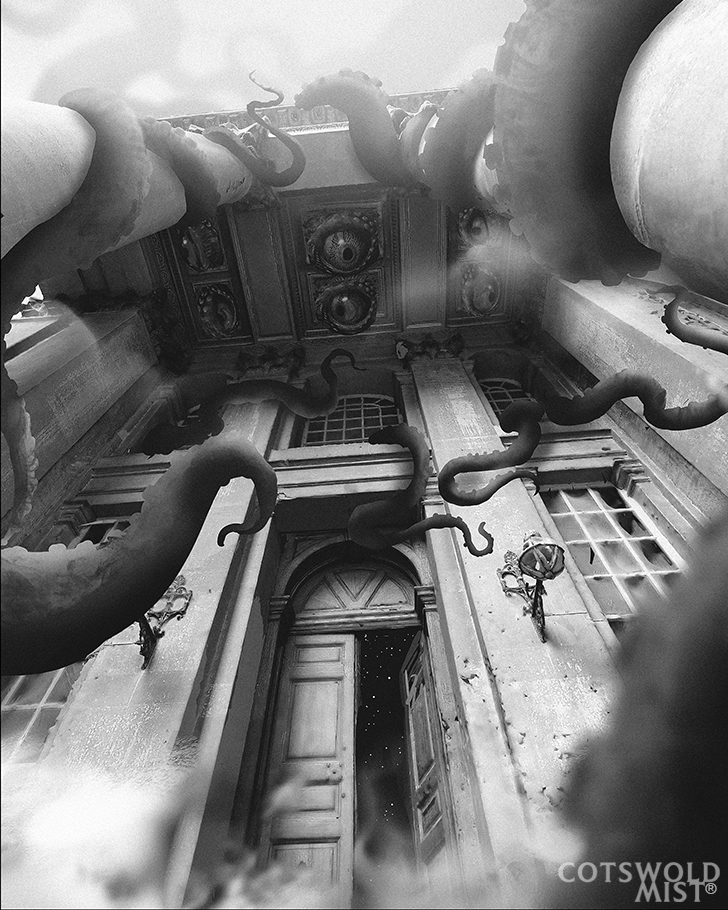
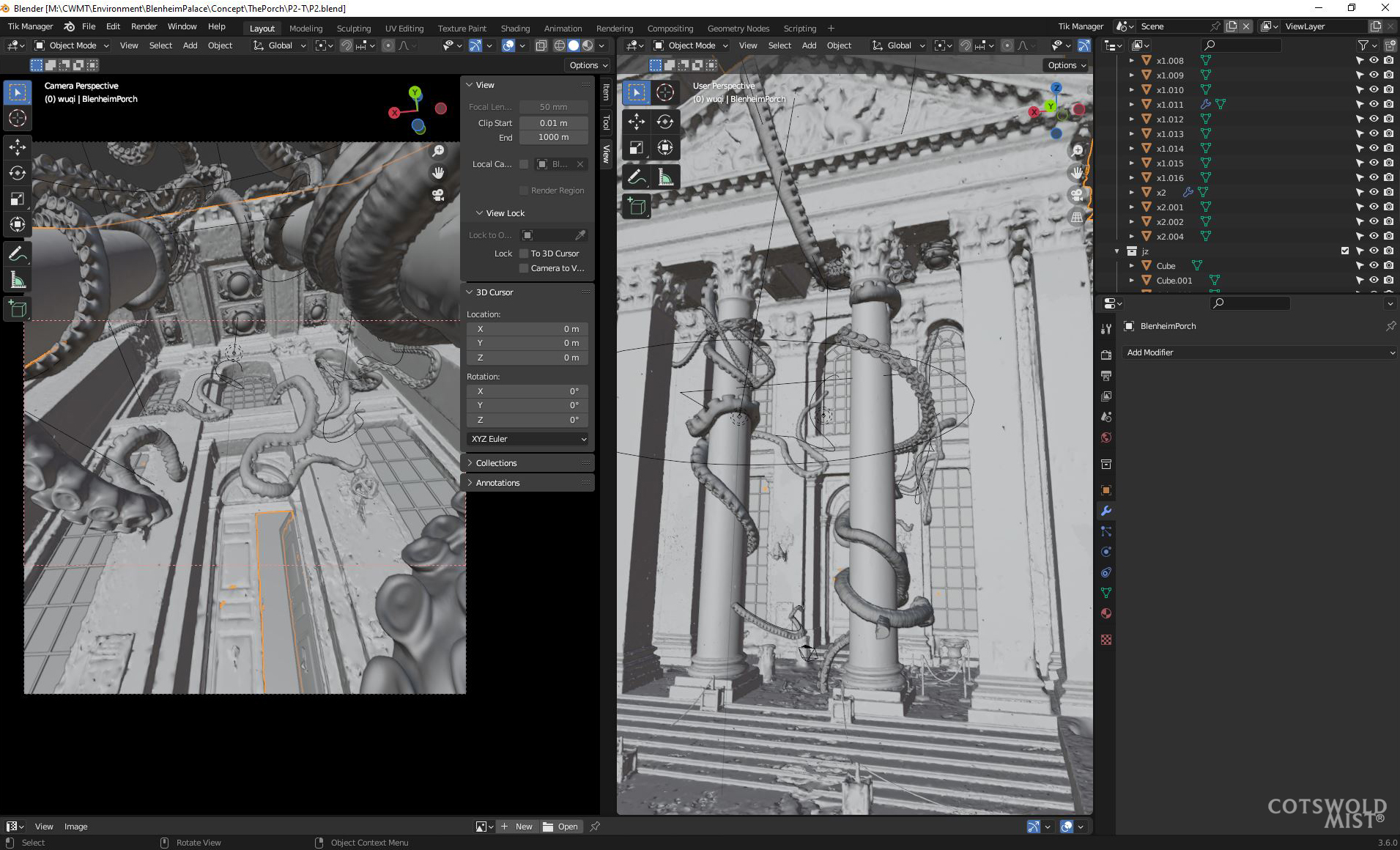
Castle Combe: The Walking Castle by Derek Winslow
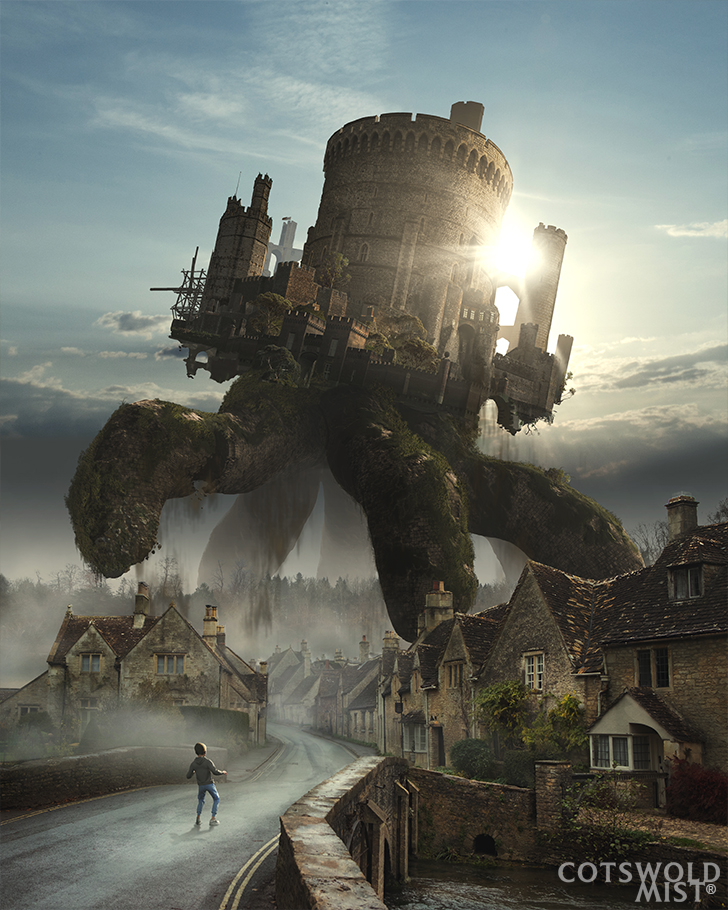
“Usually, I start with a quick sketch of my initial thoughts, refining through various drawings to work out the design and composition, then employing 3D for general layout, and Adobe Photoshop and Illustrator to bring it to life,” explains Derek Winslow. “Within the chapter, there's a passage describing the sound of the Walking Castle, which I found quite powerful. It instantly evoked so much emotion in my imagination to create the illustration.”
It is hard not to make a comparison with a particular movie by Hayao Miyazaki. “I'm a huge fan of Howl's Moving Castle [one of the best anime] and similar large-scale environmental creatures. Inga describes the legs almost as earthy roots that have been pulled up out of the ground, which made for a unique visual cue.”
The boy assisted in providing a sense of scale, and his placement was influenced by the need to balance the image of the castle, town, and bridge. “Lighting was interesting, as there are almost two light sources, one from our world and another coming from the world where this Castle lives.”
Successful world-building and creature designs come from great ideas. “Something that lights a spark in your brain and you can't help but feel compelled to get it on paper [or screen] so others can see it too.”

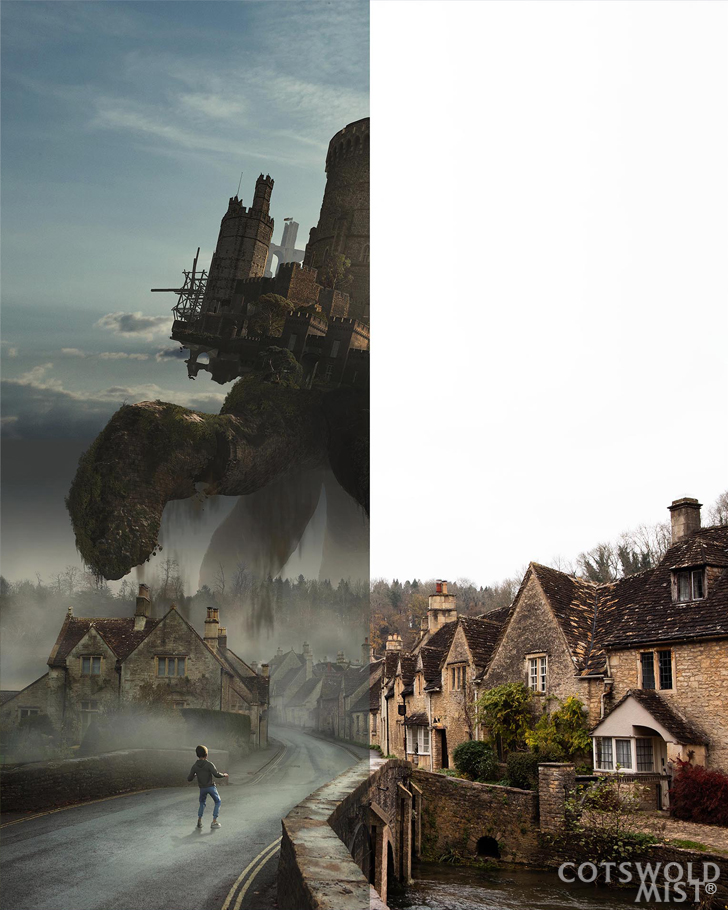

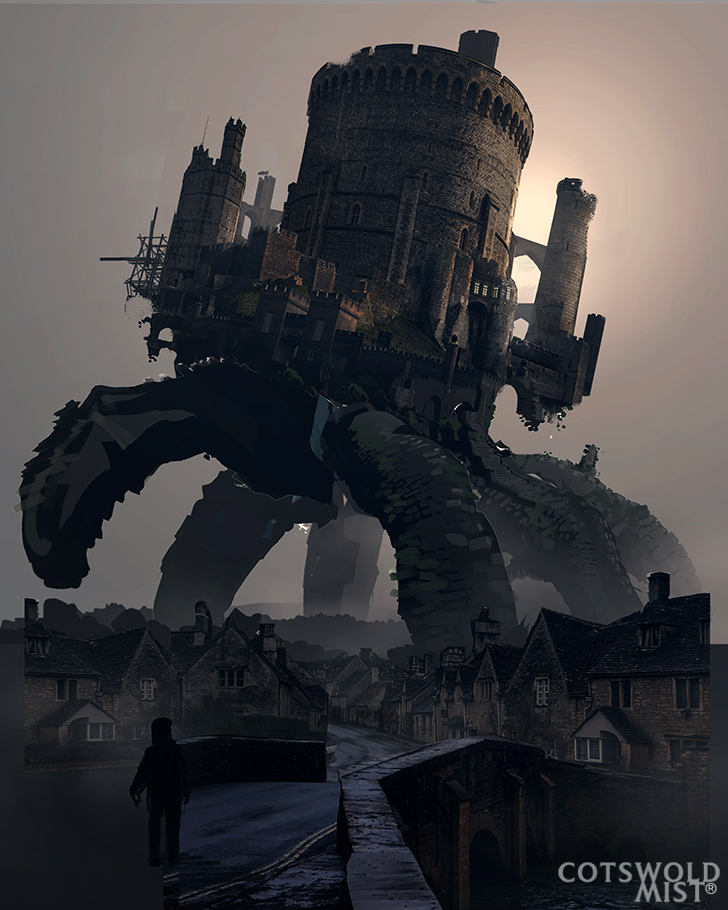
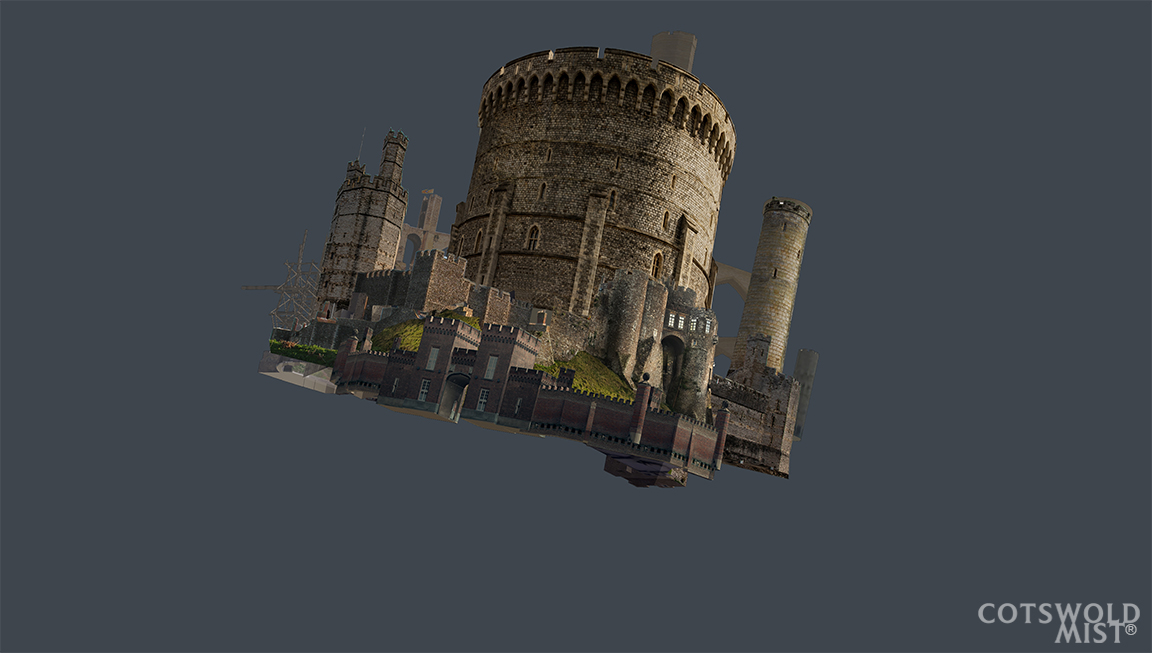
Bliss Tweed Mill: Dino Spirit by Damir Martin
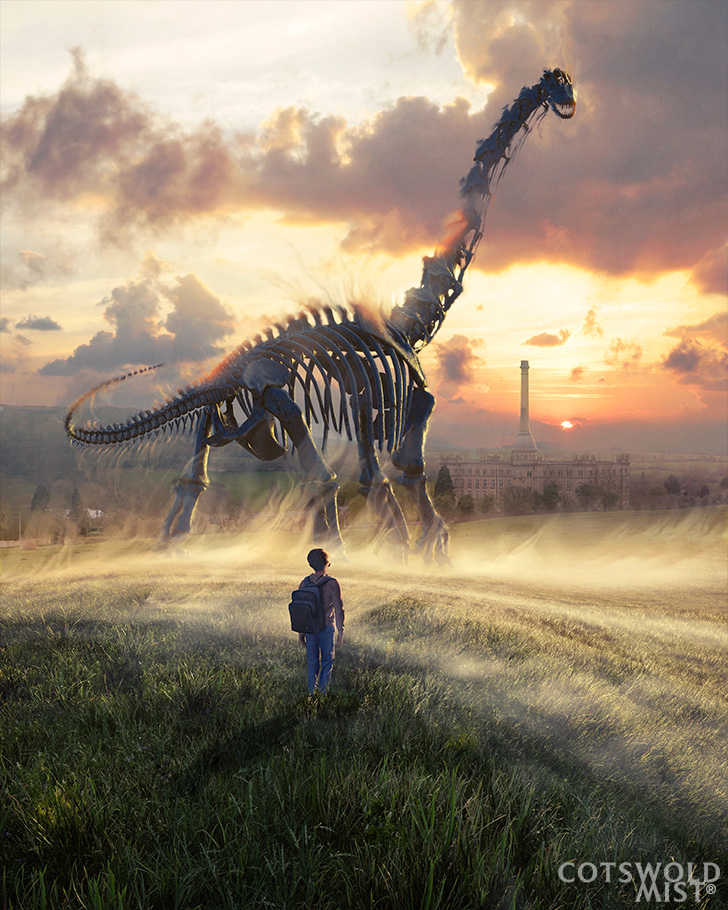
“Not much has changed in my approach,” remarks Damir Martin. “I mix ZBrush, Photoshop, 3ds Max, and Unreal Engine to visualise and conceptualise.”
An elaborate brief was given, consisting of notes and reference images. “It eliminated a lot of guesswork and aimlessness. On top of their concise notes, Inga and He Sun trusted me with my creativity to add to their vision, which I always appreciate. I feel like we harmonised quite well. The core inspiration and the main driving force came from the textual excerpts from the stories I was illustrating. As I was reading key story passages, it immediately resonated with me, and it struck these fundamental visuals into my mind.”
Additional research was conducted. “For 'Dino Spirit' I sifted through my paleoart and paleontology libraries and bookmarks to collect some skeletal images. I was looking for landscape photography and some smoky incense-type stock photos. From my experience, the better the preparation, the easier it is to flesh out your idea.”
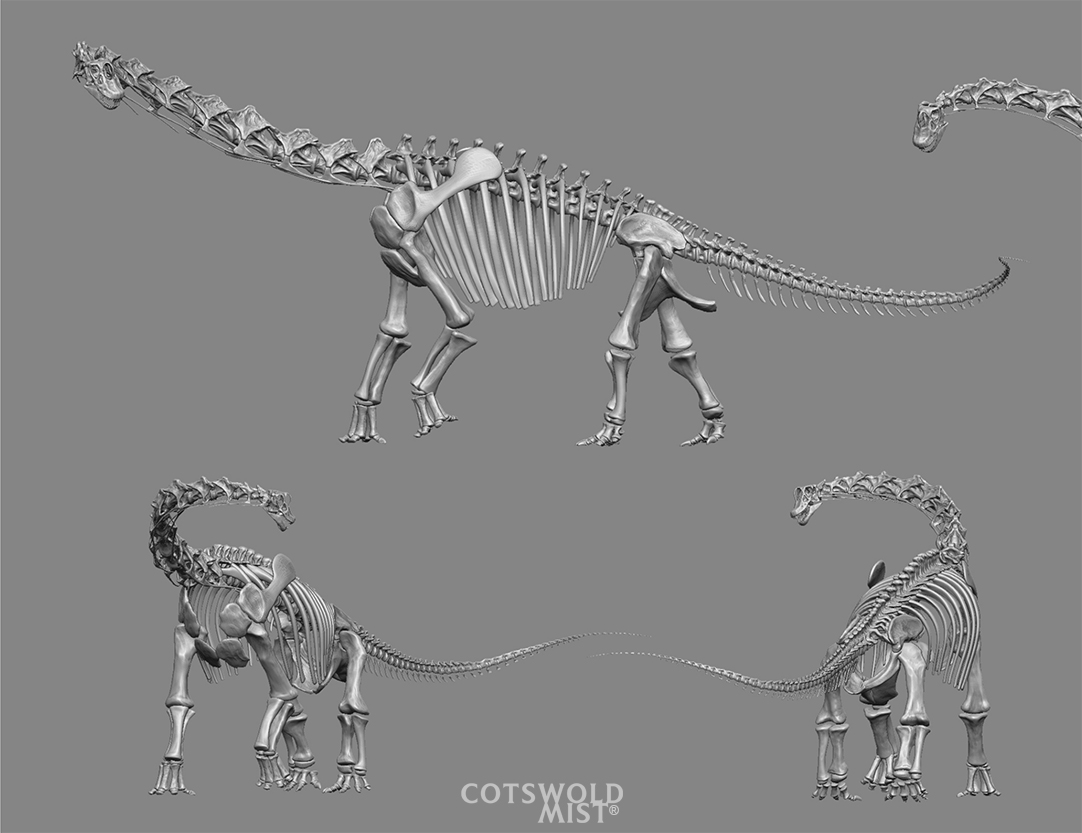
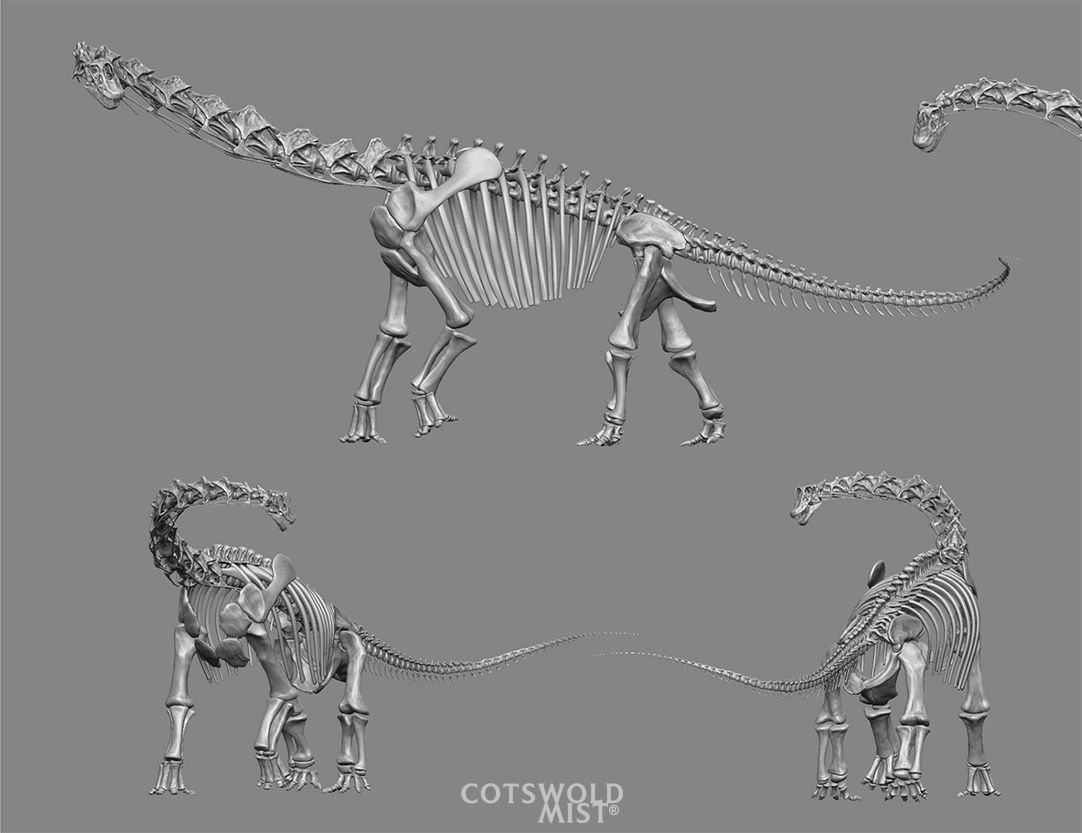
Having worked on reconstructing paleontological discoveries for the last decade or so helped Martin with fleshing out, grounding, and integrating the fantastical creatures in Cotswold Mist.
"The creative writing resonated with me, and when that happens, my mind begins to form visuals almost effortlessly," reveals the artist. "Almost like I'm remembering something I've experienced in the past, rather than having a set of words and instructions and then having to fill out the checkmarks. The science helped us understand these prehistoric creatures, how they looked, the way they moved, lived their lives, and sometimes it's possible to know what colour they were.”
“From what I can gather based on what I've read, the boy is the centre and a source of all of these apparitions that are manifesting to him across Bliss Tweed Mill,” notes Martin. “Because of that, the boy is mostly the first and the closest element to us as a viewer. He's our anchor with reality. Then we have the apparition, which is often sprawling across most of the frame, signifying the power and endless imagination of a youthful mind."

Martin continues: "As we grow up, imagination begins to wither away and we're no longer able to see any of the wonders that we see through the boy's point of view. And then in the background, we have Bliss Tweed Mill as the stage on which these events and stories play out on. I'm sort of like the boy in the book. I just stand in awe before other people's work. My jaw drops at the sheer creativity, beauty, and uniqueness of some of the creative visuals I come across.”
There is no one tool that can bring about great art. “I believe if overused, AI can deteriorate and deter creativity. Because of the way it works, it can quickly alter the perception of a creative process and make it feel as though imagination and creativity are becoming irrelevant. And we don't want that. Living in a world without art and imagination would be a bleak affair.”
Dark Woods: The Trees’ Spirit by Alex Andreev

“I draw on a Wacom tablet using Adobe Photoshop and a custom brush set that I’ve been compiling and partially creating myself over a long period,” remarks Alex Andreev.
He adds: “It’s a fairly versatile toolset that works well for almost any task. From a technical standpoint, our project was quite similar to any other illustration project, so my workflow remained pretty much the same.”
The most important task is creating an atmosphere in a scene. “That’s how I immerse the viewer as deeply as possible into the narrative, working in close alignment with the author. We spent quite a lot of time discussing the atmosphere, specifically the feelings and mood the illustrations needed to convey. All the technical choices were made to serve this goal: the colour palette, composition, creature design, their poses, movement, interaction with the environment, scale, proportions, lighting, and so on.”
Another essential aspect is believability. “There’s a saying, ‘If you create a world where people walk on their heads, make sure they have calluses on their heads.’ So, no matter how fantastical the world or its creatures may seem, they need to feel natural, as if they truly could exist in that world and interact with the characters. "That’s why a lot of attention was paid to detail, such as the texture, musculature, bone structure, and surface qualities. Some details need to be instantly recognisable in the right way so the creatures may resemble real-world relatable things, drawn from human experience. Without that, you simply can’t achieve true believability.”

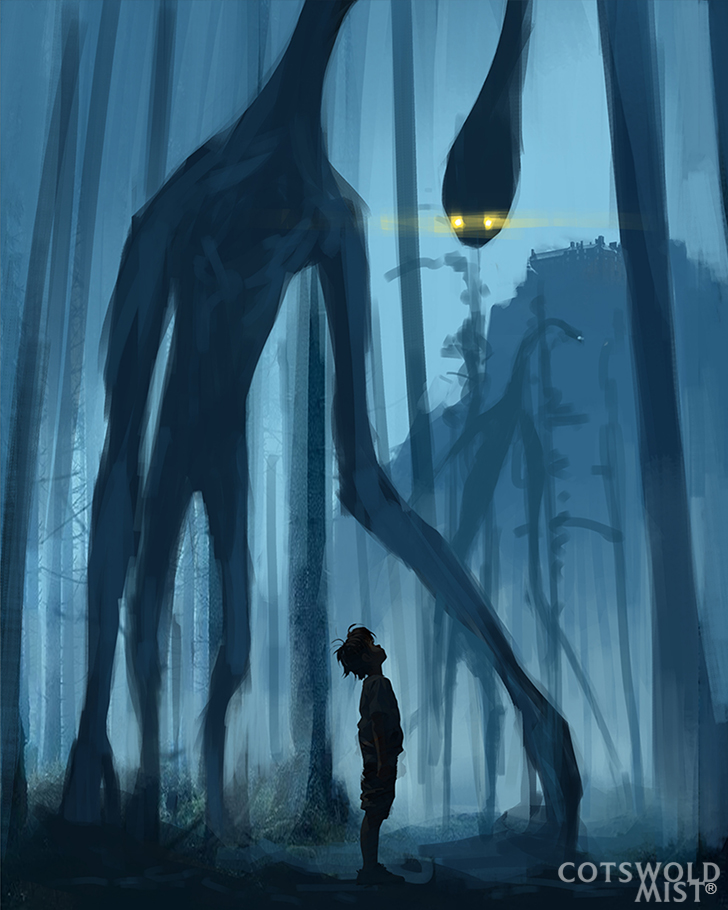

You can support the Cotswold Mist Kickstarter now. Inspired by the art? Then read our guide to the best digital art software, as well as our Procreate tutorials and Photoshop tutorials, and start creating.

Trevor Hogg is a freelance video editor and journalist, who has written for a number of titles including 3D World, VFX Voice, Animation Magazine and British Cinematographer. An expert in visual effects, he regularly goes behind the scenes of the latest Hollywood blockbusters to reveal how they are put together.
You must confirm your public display name before commenting
Please logout and then login again, you will then be prompted to enter your display name.
